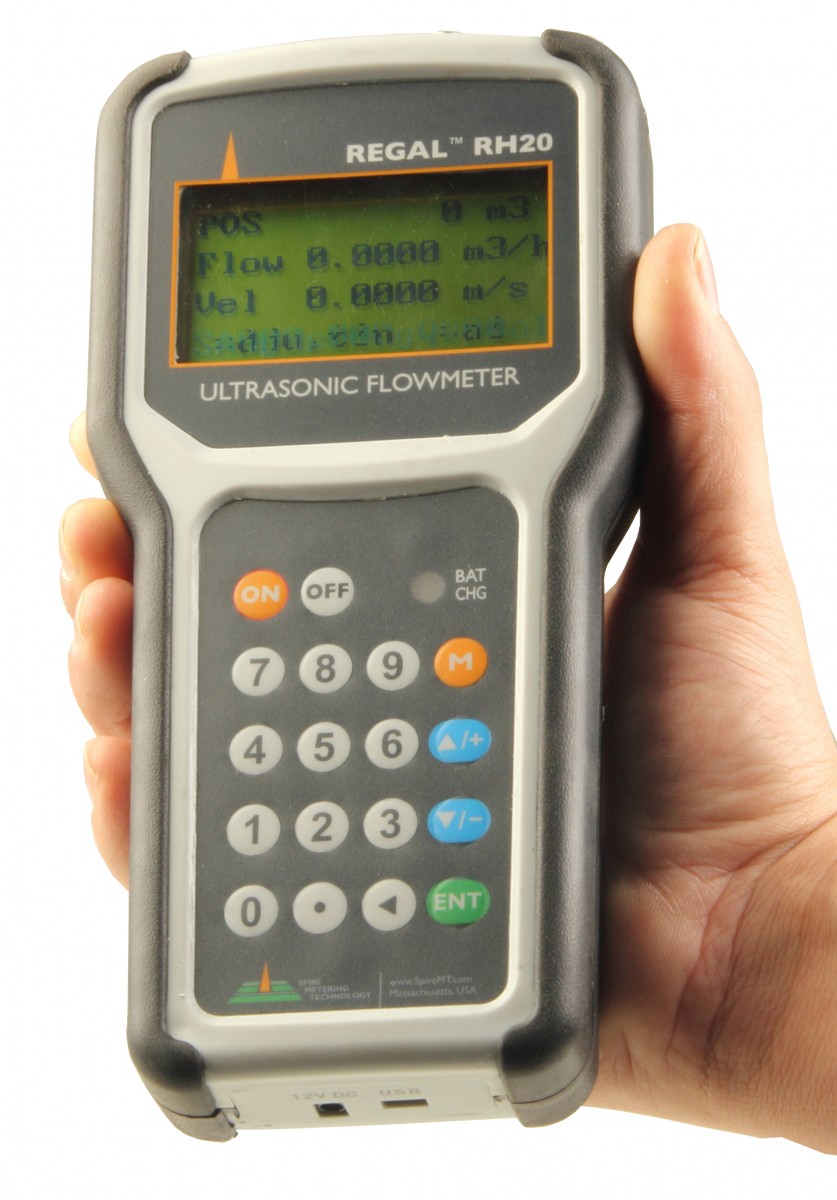|
|
All About Ultrasonic Flowmeters |
|
|
Ultrasonic flowmeters are very
promising instruments for pipe flow measurement in process control,
flow survey, custody transfer etc. They have many advantages
over conventional flowmeters as will be explained later. In the
following we are going to focus on how to select the right ultrasonic
flowmeter for liquid applications. For information on how those
flowmeters work, please visit the
ultrasonic measurement technology
page.
Liquid ultrasonic flowmeters can be classified in many ways:
(1) Based-on principle:
Transit-time vs. Doppler
A transit-time flowmeter is based on the time difference between
upstream and downstream sound propagation intervals. It usually
provides very good accuracy (about 1~2 percent). The former works well for clean flow or
flow with minor particles. Applications include pure water, sea water,
wash water, sewage, process liquids, oils, chemicals, and any
homogeneous liquids which are capable of ultrasonic wave propagation.
A Doppler flow meter is based
on the Doppler effect. It works well with suspension flow where
particle concentration is above 100ppm and particle size is larger
than 100um, but less than 10% in concentration. Doppler is easier to
make and less accurate (about 5 percent), thus, it is
cheaper than transit-time flowmeter.
Another not so popular
flowmeter is cross-correlation based ultrasonic flowmeter. It works
better for suspension flow or turbulent gas flow.
|
|
|

(2) Based-on portability: Handheld vs. Wall-mount
Handheld (or portable) flowmeer is very good for flow survey, HVAC and
many applications where mobility is a concern. Another trend of using
handheld flowmeter instead of wall-mount flowmeter is to save cost,
since some handheld flowmeters (such as
Regal Series RH20) can also be deployed as
long-term measurement device if the environment is accommodating.
Wall-mount (or fixed
installation) flowmeter is more suitable for applications such as
process control and long-term continuous flow monitoring. The
instrument enclosure is normally weather-resistant or explosive-proof.
Wall-mount is normally cheaper than handheld because it is usually
ordered in large quantity.
(3) Based-on transducer installation: Clamp-on vs. Wetted (Insertion
and Flow Cell)
Clamp on flowmeter is non-intrusive, easy to install and easy to
maintain. The transducers are
|
Featured
Product
The latest innovation of low-cost
handheld ultrasonic flowmeter,
RH20, is one of the most powerful
flowmeters available for liquid flow measurement. It employees
state-of-the-art digital signal processing and clamp-on ultrasonic
transit-time measurement technologies for accurate and reliable flow
measurement non-intrusively from out side of a pipe. In this compact and light package, many built-in
features make the flowmeter an ideal tool for flow surveys
(water, oil, chemicals,
beverage, etc), HVAC
and other closed-pipe
applications. Click
here to see NIST-traceable
calibration results.
Click here for a quick
quote now!
|
|
mounted out side of a pipe, thus, no need to cut the
pipe or to drill holes on the pipe, and there is no direct contact
thus no pollution to the liquid, no pressure drop, etc.
Wetted flowmeter comes with two varieties, insertion
and flow cell. Insertion flowmeter requires to dill holes on the pipe
wall to install the transducers. Flow cell, also called spool piece,
needs to be installed in line with the pipe, thus needs pipe fitting,
etc. The transducers are pre-installed on the flow cell, thus,
installation error has been reduced to minimum. In general, wetted
transducer has better accuracy and better long-term stability than
clamp-on type, but it might be more expensive. Comparing with
conventional flowmeters, wetted type does not have moving parts, no
interference to flow profile, no pressure drop and needs very little
maintenance.
(4) Based-on transducer scheme:
Single-path vs. Multi-Path
Single-path flowmeter utilizes one pair of transducers to form one
ultrasonic path to intercept the flow in a pipe. It is suitable for
small and medium size pipes. For large pipe size and very high
accuracy needs, multi-path transducer installation may be considered.
However, a multi-path flowmeter is much more expensive than a
single-path flowmeter. It is usually used in custody transfer where
accuracy is extremely important.
Ultrasonic Flowmeter Selection Guide
The most commonly used
ultrasonic flowmer is transit-time based single-path flowmeter due to
its high accuracy and reasonable cost. Depending on the applications,
the selection of the right type of flowmeter may vary. You may need to
answer the following questions before making the final decision:
-
Is the pipe full?
All ultrasonic flowmeters require that the pipe is full of liquids.
There are some work around with partially-full pipe, but by no means
you will get good results.
-
Does the liquid have particles
more than 200ppm and particle size larger than 75um (the number may be
different for different manufacturers)?
If yes, use Doppler. Otherwise, consider transit-time.
-
Does the liquid temperature
fall into the transducer temperature range?
-
Press range in the pipe (if
you select wetted transducer)?
-
High accurate the measurement
should be?
In general, multi-path is higher than single path, flow cell is better
than insertion, and insertion is better than clamp-on. However, if you
have on-site calibration facility, the story will change.
-
Do you want to easily move the
flowmeter around?
-
What output signals you need?
What functionalities you want?
Analog? Digital? RS232? Data logger?
-
What are the safety
requirements?
-
Pipe size range? Pipe
material? Lining?
-
Flow rate range?
-
Enough straight pipe length?
In order to guarantee the result accuracy, it is normally recommended
to have 15 times of pipe diameter straight pipe run at the measuring
site. If there is a pump or valve on the upstream, the straight length
should be increased.
-
The financial budget.
The above
questionary seem overwhelming if this is the first time you are
looking for a ultrasonic flowmter. Please do not be scared. Most likely, a simple clamp-on
transit time handheld flowmeter or wall-mount flowmeter will suit your
application. If not, please feel free to
contact us for detailed suggestions.
In the past few years, ultrasonic flowmeter price
has been going down significantly. However, it is still expensive
comparing with conventional flow meters. In order to win the market
over conventional flowmeters, a revolutionary price reduction must be
achieved. The good news is that this kind of low
cost, high quality products have
already been taken off to the market. The
Guaranteed high quality, guaranteed lowest price
policy offered by Spire Metering Technology LLC is particularly
attractive.
Click here for more information.
|
|
|


